How to Handle Severe Weather and Storms While Boating
Always check the weather forecast before heading out on the water via the local radio station or coast guard. If there is severe weather brewing, or a small craft advisory in effect, stay on shore!
Sometimes, a storm can take you by surprise. That’s why you need to be prepared. Now is your chance to get familiar with what to do if you are caught in severe weather while boating.
You’re caught in a storm: what should you do first?
First and foremost, don’t panic. There are things you can do to weather a storm safely, and you need to stay clear-headed to take action.
Wear life jackets
Always make sure everyone on board is wearing a life jacket. It is the law everywhere in the United States that all passengers, including infants and children, must be wearing an approved, correctly-fitted life jacket while out on the water. It could save a life if anyone falls overboard due to rough weather conditions.
Reduce speed
Slow down your boat so you can stay in control while still making headway through rough water.
Close all openings
Secure all hatches, windows, and doors to minimize the risk of water entering the vessel and causing swamping.
Stow loose items
Remove or secure any loose gear that could become hazardous if tossed around by waves. Passengers could be injured if the boat lurches unexpectedly, or you could lose vital safety equipment overboard.
Turn on your navigation lights
Activate your boat’s navigation lights so other boats are more easily able to locate and identify your vessel. Navigation lights are not only for use at night. They are also important in low-light conditions caused by storm clouds, driving rain, or fog.
Navigating the storm safely
The next step is to assess your options. If possible, head towards the nearest safe shore or harbor. If you are already caught in a storm, it may be safer to ride it out in open water rather than attempting to navigate to shore or dock your boat in high winds and waves.
How to ride out a storm
- Point the bow of your boat into the waves at a 45-degree angle to help avoid being swamped by incoming water.
- For smaller boats, consider angling directly into the waves at a 90-degree angle for stability.
- If your engine fails or if conditions worsen, drop an anchor from the bow to prevent drifting into dangerous areas. If you lack a conventional anchor, a bucket tied to a line can serve as an emergency sea anchor.
General safety precautions
- Stay low and central: Have all passengers sit on the floor near the centerline of the boat. This position enhances stability and reduces the risk of capsizing
- Disconnect electrical equipment: If you are caught in an electrical storm, unplug all electrical devices and avoid contact with metal objects to reduce the risk of electrocution.
- Monitor the weather and your surroundings: Keep a sharp lookout for other boats, debris, or hazards in the water, and be prepared to take evasive action if necessary. Visibility can diminish rapidly during storms, so stay alert.
- Use signaling devices: If anchored and waiting out the storm, you can also use marine distress signals to alert other boaters of your presence or call for help if needed. In low visibility, you can use a foghorn, bell or whistle to make a continuous sound. Make sure you carry the right boating safety equipment on board at all times, including a marine radio or EPIRB.
Get your U.S.A. boating license and stay safe
You never know what might happen while you’re out boating. A responsible boat operator always files a float plan so that others are aware of when they are leaving , where they are going, and when they are expected back.
You can learn more about safe boating by taking an approved boater safety course from Drive A Boat USA. The course and test are offered 100% online! Get your boater card in California, New York or Florida today!

